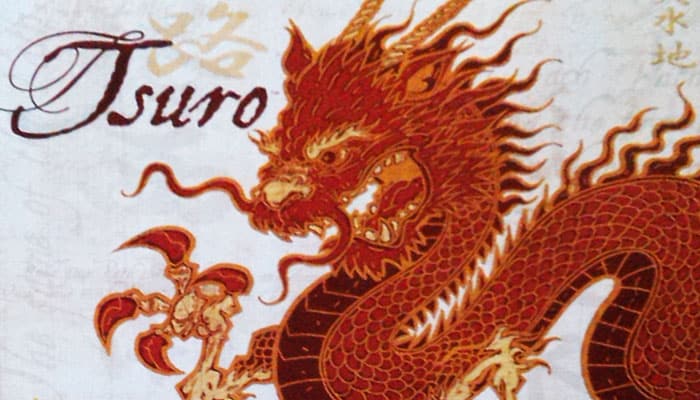
Components

1 game board
35 path tiles
8 marker stones
1 Dragon tile
The Tiles

Each path tile shows four lines-or paths-that create eight points on the tile's edges. When the tiles are laid alongside each other, these points line up and the paths continue.
Each tile is unique.
Paths on a tile might cross one another, but they each proceed uninterrupted and independently of the others.
Setup
- Lay out the game board.
- Each player chooses a marker.
- Find the Dragon tile and set it aside.
- Shuffle the path tiles and deal three face down to each player.
- These tiles create your hand. You may look at the tiles in your hand at any time.
- Stack the remaining path tiles face down. This stack is the draw pile.
Game Play
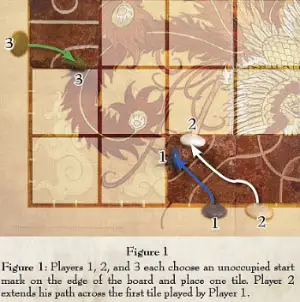
The oldest player takes the first turn.
The first player places his or her marker on any of the start marks (short beige marks) on the outside edge of the game board.
Continue clockwise around the board until each player has chosen a start mark and placed his or her marker. Placing markers happens before any tiles are played.
Each turn has three parts:
- Play a path tile.
- Move the markers.
- Draw tiles.
The player currently taking his or her turn is called the active player.
I. Play A Path Tile
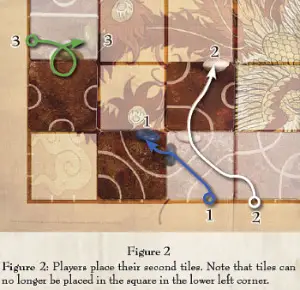
The active player chooses one of the path tiles from his or her hand and places it on the open square next to his or her marker. The tile may be placed in any direction.
Once a tile has been placed, it cannot be moved for the rest of the game.
A player may not willingly connect his or her own path to the edge of the board (thereby forcing himself or herself out of the game) unless no other move is possible.
Near the end of the game, it is possible to eliminate yourself in this manner.
II. Move The Markers
The active player moves his marker to the open end of the path.
Then all other markers adjacent to the new tile are moved to the ends of their paths.
A player is eliminated from the game if the open end of his or her path connects to the edge of the board.
Path tiles from eliminated players' hands are shuffled into the draw pile.
III. Draw Tiles
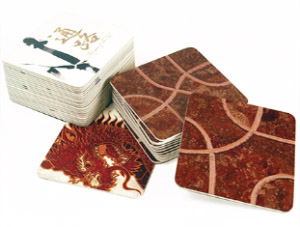
For the first few turns of the game (or throughout a two-player game), only the active player draws a path tile from the draw pile, replacing the one he or she played that turn.
Later in the game, when players have fewer than three path tiles in their hands, all players will have the chance to draw tiles, even if it is not their turn.
Starting with the active player and moving clockwise, each player with fewer than three path tiles draws a tile, continuing around the board until all players have three path tiles or the draw pile is empty. This rule changes slightly if a player has the Dragon tile:
Dragon Tile
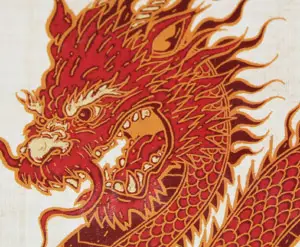
The Dragon tile is used to keep track of who should draw a path tile when new tiles become available.
If a player tries to draw a path tile and cannot do so because the draw pile is empty, he or she takes the Dragon tile instead, and no more path tiles are drawn that turn.
When new tiles become available later in the game, the first player to draw a tile will be the player with the Dragon tile instead of the active player. That player sets aside the Dragon tile when drawing a path tile.
Once all players have three path tiles or the draw pile is empty, play continues clockwise around the board.
End of the Game
When only one marker remains on the board, that player wins the game.
Continue Reading


